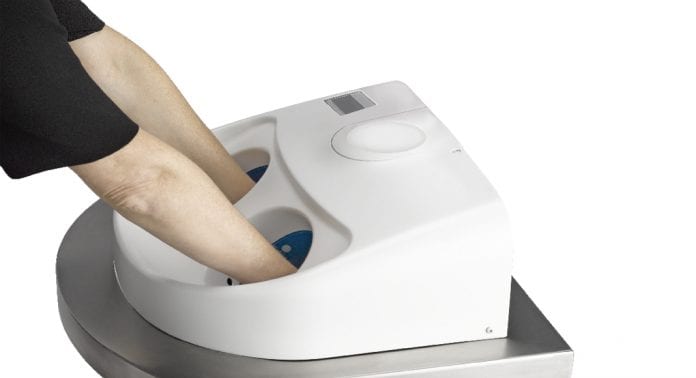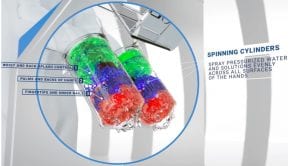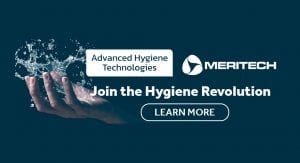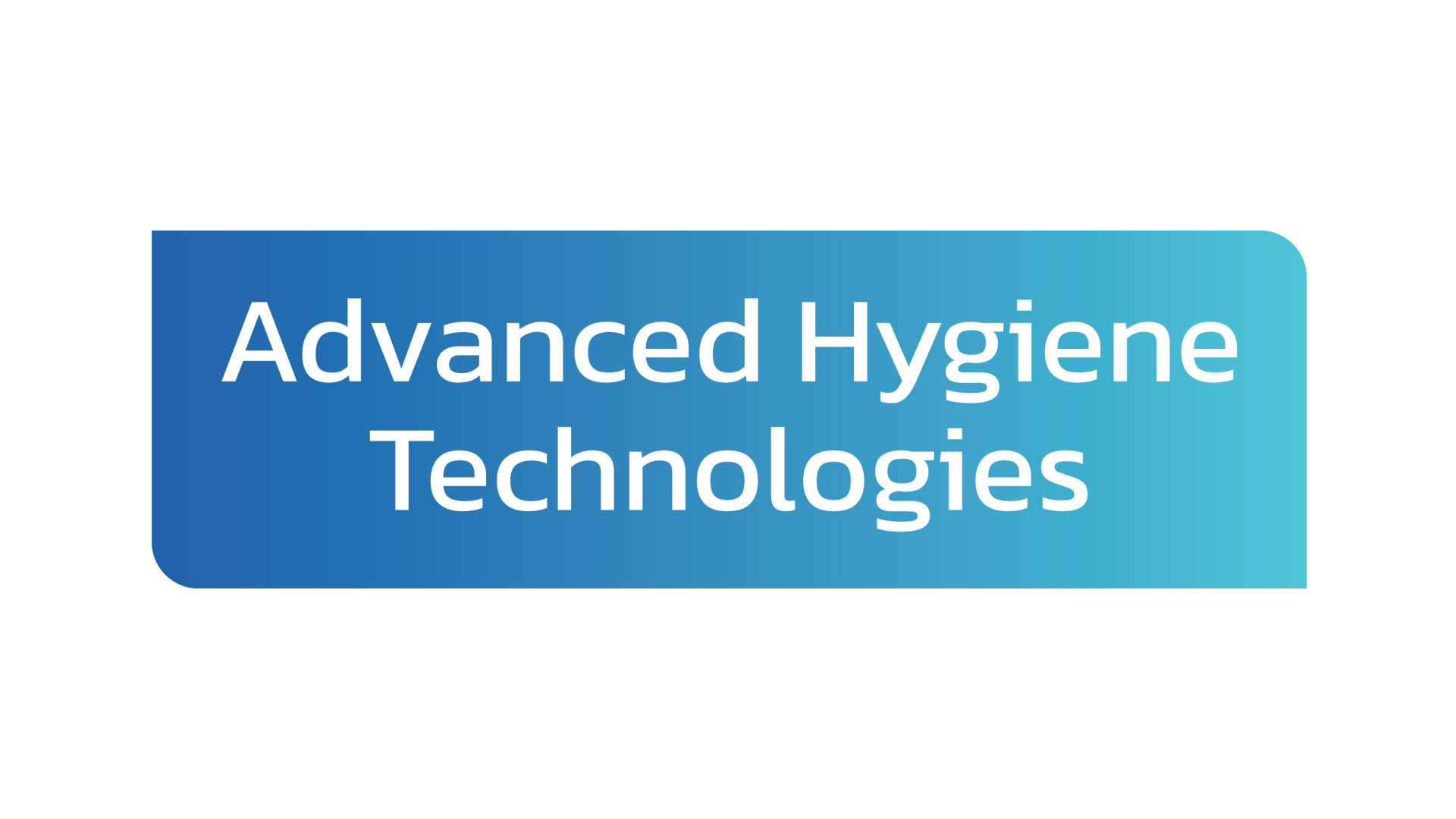
CleanTech automated touch-free handwashing technology removes more than 99.9% of pathogens while saving time and resources.
The World Health Organization (WHO) has described hand hygiene as the single most important measure people can take in order to prevent the transmission of pathogens and alleviate the burden incurred by healthcare-associated infections (HAIs). Implementing and overseeing correct hand hygiene compliance can be particularly challenging, however; as each person washes their hands at different times, for different durations and using different techniques which may leave areas of the skin untouched. 80% of people worldwide do not wash their hands at all following potentially contaminating actions such as using the toilet; while up to 40% of healthcare facilities around the globe do not offer handwashing facilities at points of care.
With the need for infection control measures still very much a key priority, one significant way to improve hand hygiene compliance is to make the process itself easier – and more consistent. Conor McGauran of Advanced Hygiene Technologies Ltd tells HEQ about CleanTech, a unique technology designed to accelerate and improve the handwashing process.
How does CleanTech work? How is it able to clean a user’s hands thoroughly in only 12 seconds, while using 70% less water than traditional handwashing methods?
CleanTech washes the hands for the user by directing 40 jets of water and soap, at pressure, simultaneously to all parts of the hands and wrists. The user simply lowers each hand into its own cylinder, which rotates around the hand delivering the soap and water; with the handwash cycle beginning automatically once the hands pass the photo eye at the top of each cylinder. The process is just like a properly performed manual handwash in that it includes wetting of the hands, a soap and water wash, and then a rinse at the end.
CleanTech performs this handwash effectively and completely touch-free, removing the risk of cross-contamination from taps and soap dispensers, and the need for manual technique. A manual handwash which is correctly performed in accordance with the WHO’s handwashing guidance involves eight distinct steps and 13 different actions, and takes around 40 seconds to complete. CleanTech has been through over 50 efficacy studies in an independent FDA-registered, ISO:17025-accredited laboratory; and has been found to consistently remove more than 99.9% of pathogens, including coronavirus, in just 12 seconds: a time saving of 70%. This saving also applies to water usage, meaning CleanTech delivers 70% improvements to both productivity and resource consumption with every handwash cycle.
The COVID-19 pandemic has drastically increased public awareness of the importance of hand hygiene to prevent the spread of infection. Has this expanded the market for CleanTech?
The COVID-19 pandemic has reinforced public awareness of the importance of properly performed hand hygiene, especially with regards to handwashing, the most important step in preventing the spread of pathogens and dangerous infections. This increased awareness has meant sectors beyond our traditional focus areas of healthcare (hospitals, nursing homes, primary care centres, laboratories etc.), life sciences manufacturing, and food and beverage processing have taken the decision to invest in improving handwashing performance. CleanTech has proven an ideal solution for protecting staff, product quality and customers in an increasingly diverse range of fields, including the hospitality, general industrial, and public sectors. We now have customers across all of the aforementioned sectors in the UK and Ireland, with the number of installations growing as more and more people and organisations become aware of the numerous benefits of installing CleanTech touch-free automated handwashing systems.

What types of facilities or institutions have already adopted CleanTech technology? What are some other potential areas of use for CleanTech?
CleanTech is in use in all sectors, including hospitals, nursing homes, cleanroom facilities, biotech, food manufacturing, food service, education, and public use settings, numbering over 1,500 installations across the USA and internationally. Following the onset of COVID-19, CleanTech can now also be found in the likes of schools, fitness and gym facilities, and even cruise ships.
Repeated handwashing can dry the skin, and in extreme cases can lead to cracked skin which in turn increases the risk of infection. How does CleanTech offset this risk?
Dry skin and its associated irritations can deter even the most conscientious from regularly performing effective hand hygiene. CleanTech solves this issue with its specially formulated handwashing solution UltraPure, which contains conditioners that promote skin health, leaving hands feeling softer after each handwash cycle. As an example, I have often been at trade shows where I have demonstrated CleanTech over 200 times in one day, for three full days in a row, and thankfully I have never suffered any dry skin or irritation. This is an amazing result; and very important to any sector where frequent handwashing should be taking place. This improved skin health encourages increased compliance, and in some settings handwashing compliance has increased by up to 400% since adopting CleanTech.
Is there a possibility that wider uptake of correct hand hygiene could accelerate a return to public life? Could automated tracking of handwashing, such as that offered by CleanTech, facilitate this within organisations?
Undoubtedly, consistently effective handwashing helps to prevent the spread of pathogens and infections, thereby protecting us all from disease outbreaks, including the likes of COVID-19. Therefore, wider implementation of effective handwashing systems and increased compliance with those systems will accelerate a return to public life and facilitate more social interactions. A big challenge is understanding whether people are washing their hands at all (handwashing compliance), and if so, whether they are doing it correctly (handwashing effectiveness). There is the added complication of human behaviour, with people invariably washing their hands differently from each other (a lack of standardisation in handwashing performance). Given that CleanTech is completely touch-free, it delivers the peace of mind which comes from knowing that every user gets the same effective handwash every time, solving the effectiveness challenges and also delivering 100% standardisation. Its inbuilt electronic handwash counter enables users to reliably measure handwashing compliance by generating the all-important metrics to track performance and implement awareness programmes and interventions. It literally solves all the challenges with manual handwashing by fully automating the process.

This article is from issue 17 of Health Europa. Click here to get your free subscription today.









